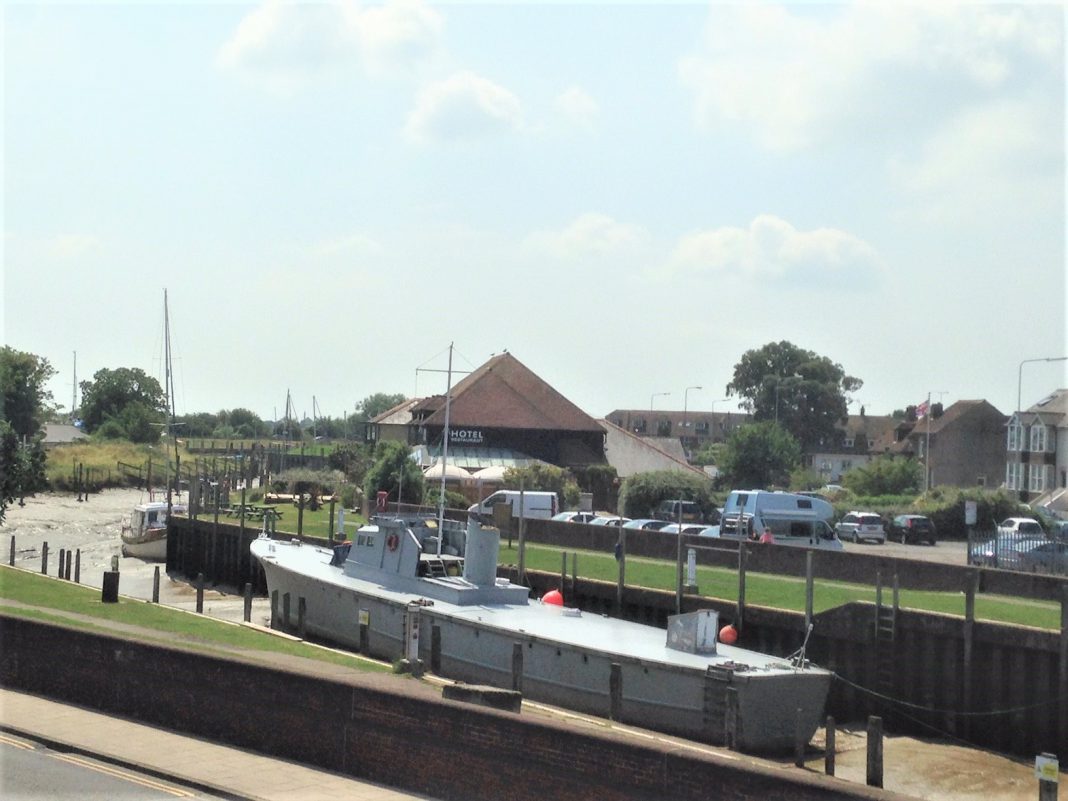Having lived in Rye for a while now, I have always taken photographs when the opportunity arose – for no real reason, just personal interest – but with so much material available locally there is often the opportunity to take a shot of something interesting and keep the photos for a rainy day.
I found many of these photos (all taken on a bog standard iPhone) really useful when I came on board with Rye News as a volunteer contributor and have used many photographs in articles over the years. Trawling through them this morning I came across a photo I took of RML526 (Rescue Motor Launch 526) and did a bit of research which I thought would be of interest.
Rye News covered the story in 2019 when she sank and had to be removed and destroyed. The launch’s demise also attracted two comments this week to a previous story. An end of an era, but part of our cultural history, and I felt it important to revisit its history so I have added the following extract verbatim from National Historic Ships UK.
A revolutionary “flat pack” design
“RML 526 had originally been ordered for the Royal Navy on 27 August 1941 from Solent Shipyard Ltd, Lower Swanwick, on the River Hamble, and was completed on 27 August 1942. She was built to a revolutionary ‘flat pack’ design incorporating an early use of plywood in a naval context to form the hull frames. The boats were built as kits at the Fairmile Company’s factory in Surrey, and delivered to small yacht builders and shipyards in the UK, Australia, Canada, India, South Africa and Singapore.
The Fairmile B Motor Launches were an invaluable part of Britain’s coastal defences during the Second World War used to patrol areas, on convoy protection duties, mine clearance and mine laying, troop and supply transportation and rescue missions. The Rescue Motor Launches (RML) were more normally tasked to air sea rescue and were responsible for the recovery of many downed air crew in the seas around Britain.
Out of a total of 650 Fairmiles built during the war, she was one of only five remaining vessels of her class still in UK waters until 2019.
She joined the 63rd ML Flotilla at Falmouth and later transferred to the 61st ML Flotilla in the Portsmouth Command as an ambulance launch operating between Dover and Dartmouth. For this work, she was based at Newhaven, until 1946, when she transferred to Plymouth. She was decommissioned and sold in March 1946, converted for use as a yacht and renamed ANBRIJO.
From Tangier to Torquay
Between 1947 and 1949, she ran between Gibraltar and Tangier, where she was arrested by the Admiralty Marshal in 1949, reasons unknown, and subsequently sold at Fowey. She was converted at Millbay Docks In Plymouth, re-engined and fitted with seating both above and below decks being licensed to carry 175 passengers. She became WESTERN LADY IV, operating between Brixham and Torquay for the Western Lady Ferries company.
She was sold in 2007 to private owners and, in September of that year, sailed to Plymouth Sound to be berthed at Southdown Quay, Millbrook, Cornwall. A refit and restoration followed, in which the afterdeck saloon was removed, and she became a ‘live-aboard’ seagoing vessel. Her hull was repainted in dark blue.
As of March 2019 it was reported that the vessel had sunk on her mooring in Rye Harbour, East Sussex and in May of that year it was reported she had been disposed of.
DIMENSIONS. Breadth: Beam 18.30 feet (5.58 m) Depth 4.59 feet(1.40 m) Length: Overall111.93 feet (34.14 m) Tonnage: Gross 135.00″
Image Credits: Nick Forman .



